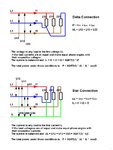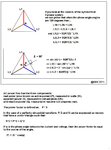munzir
Full Member level 6
what is the amperage of a 300 KW load ? How to calculate it ?
what size of the cable should be selected for 300 KW load ?
The load is resistive + inductive
what would be the voltage drop in the cable (suggested for the 300 KW load) ? And, at what size or for what size we calculate the voltage drop means after what length we consider the voltage drop in the cables or conductors ?
Should the selected cable be a single 4 core cable (including 3 phases + neutral or earth) OR should there be individual cables (including 3 cables of same size for 3 different phases & 2 cables of same size for neutral & for earthing) ? Which would be better to select ?
Should the selected cable is made of copper ? not of silver or aluminium ?
thanks
what size of the cable should be selected for 300 KW load ?
The load is resistive + inductive
what would be the voltage drop in the cable (suggested for the 300 KW load) ? And, at what size or for what size we calculate the voltage drop means after what length we consider the voltage drop in the cables or conductors ?
Should the selected cable be a single 4 core cable (including 3 phases + neutral or earth) OR should there be individual cables (including 3 cables of same size for 3 different phases & 2 cables of same size for neutral & for earthing) ? Which would be better to select ?
Should the selected cable is made of copper ? not of silver or aluminium ?
thanks


